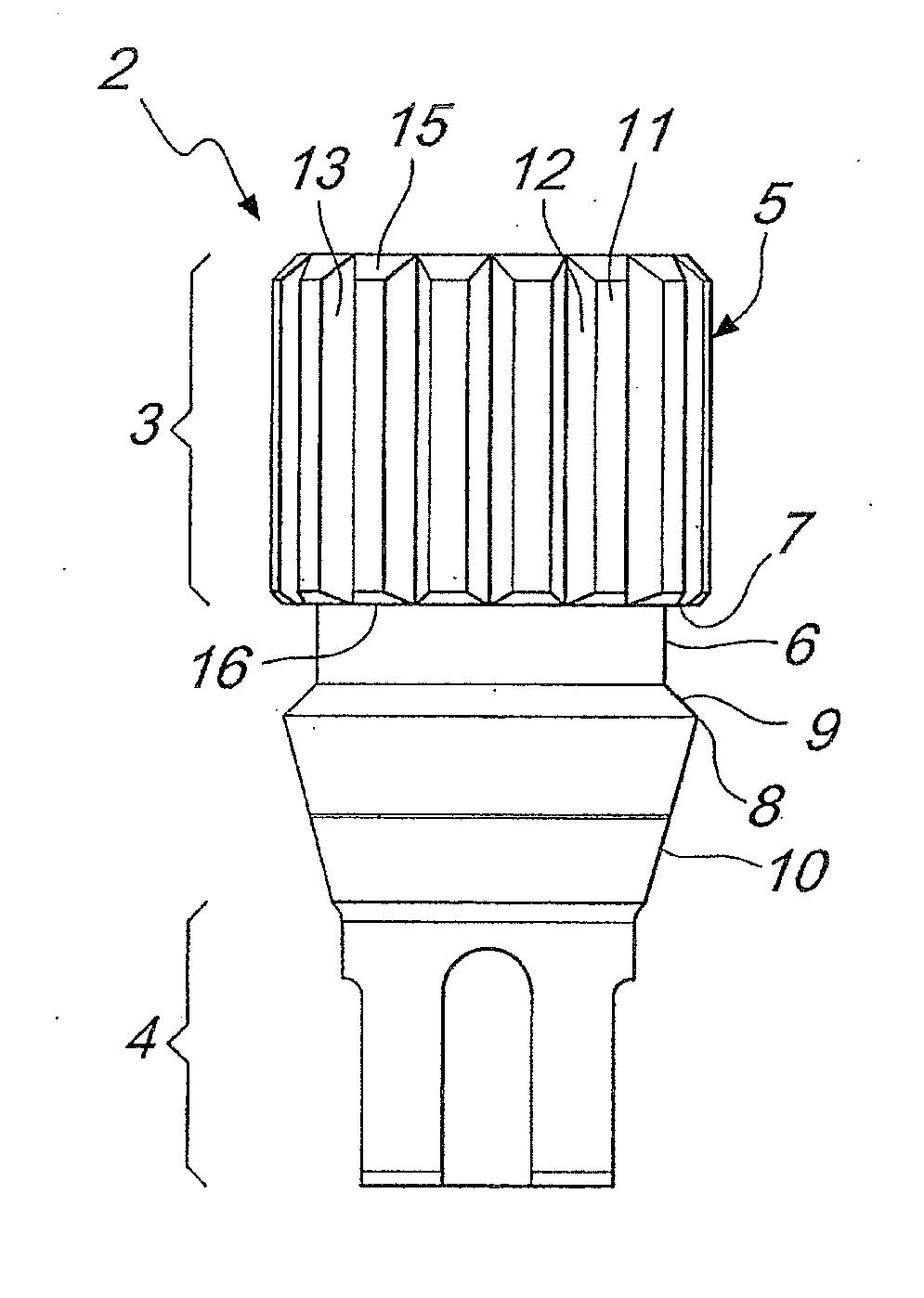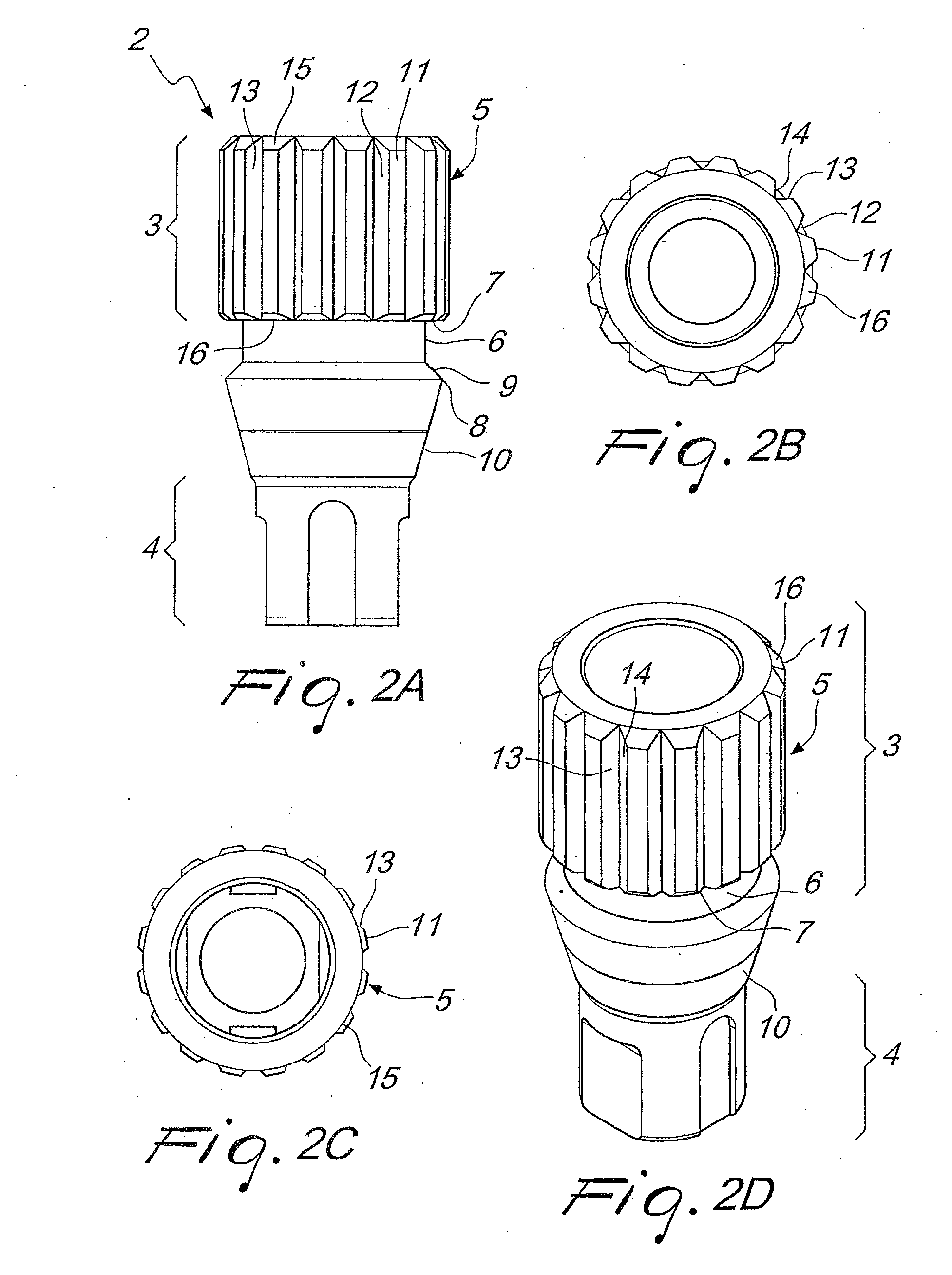Abutment with inlay for dental implants
a technology of inlay and dental implants, applied in dental prosthetics, dentistry, medical science, etc., can solve the problems of reducing overall stability, risk of loosening of the material bond between the inlay material and the inlay, and shape must be reworked at high cost or a new abutment must be produced, so as to achieve the effect of better adhesion of the inlay
- Summary
- Abstract
- Description
- Claims
- Application Information
AI Technical Summary
Benefits of technology
Problems solved by technology
Method used
Image
Examples
Embodiment Construction
[0027]With reference to FIG. 1, a currently preferred embodiment of an abutment with inlay according to the present invention is described, which abutment is generally designated by reference number 1. An abutment with inlay for provision of a dental implant, which as such is sufficiently known and therefore not described further, comprises an exterior abutment portion 1′ within which an inlay 2 is arranged apically.
[0028]The inlay 2 coronally has an outer portion 3 which is suitable to provide a connection between the inlay 2 and the outer abutment portion 1′ and an apical portion 4 which is suitable for releasable connection to a dental implant.
[0029]The surface 5 of the coronal portion 3 of the inlay 2 is shaped such that an outer abutment part 1′ can positively engage it and be connected to it practically in a non-detachable manner. In positive engagement, an outer abutment part 1′ manufactured previously is simply pressed onto the coronal portion 3 of the inlay 2. Alternatively...
PUM
 Login to View More
Login to View More Abstract
Description
Claims
Application Information
 Login to View More
Login to View More - R&D
- Intellectual Property
- Life Sciences
- Materials
- Tech Scout
- Unparalleled Data Quality
- Higher Quality Content
- 60% Fewer Hallucinations
Browse by: Latest US Patents, China's latest patents, Technical Efficacy Thesaurus, Application Domain, Technology Topic, Popular Technical Reports.
© 2025 PatSnap. All rights reserved.Legal|Privacy policy|Modern Slavery Act Transparency Statement|Sitemap|About US| Contact US: help@patsnap.com



